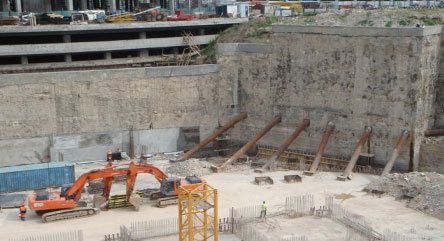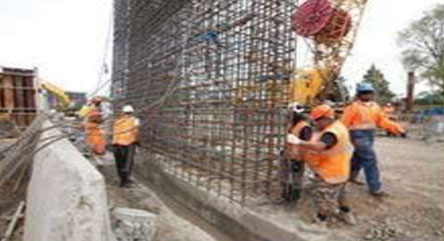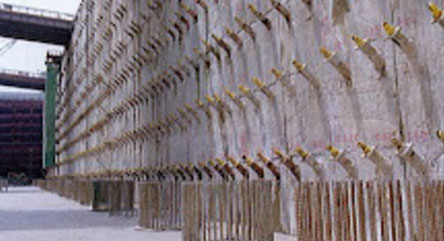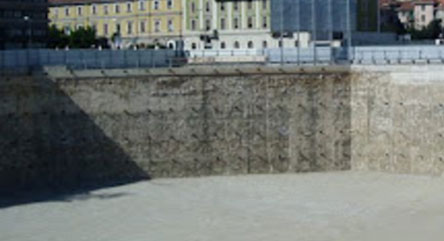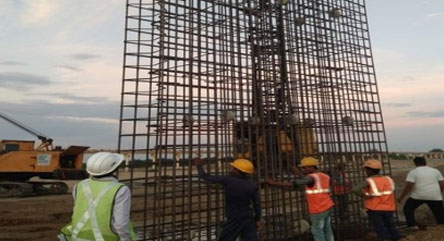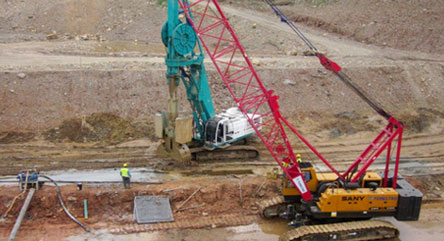The Soil Retaining Diaphragm Wall is the most suitable method of shoring to provide rigid structure for deep excavations. It also provides better verticality controls and offers better water tight ness barrier compared to any other methods of shoring. A concrete Diaphragm Wall is formed by a series of concrete reinforced panels drilled with specialized equipment such as Cutter – also known as hydro mills - or hydraulic grab. The panel length can be adjusted to suit the project and based upon the equipment (from 2.50m to 7.00m) and the width varies from 0.6m to 1.2m. A guide wall is constructed to hold the reinforcement cage and guide the drilling equip ment while the excavation process is going on.
A bentonite suspension fluid is normally used to provide temporary support during the trench excavation and therefore reduces the risks of collapses. Our machineries for the Diaphragm Wall are able to drill through rock to create the required designed socket length up to 70.0m depth. The use of a stop end incorporating a single water bar ensures maximum water tightness between the panels and reduces the risks of leakages while excavating.
Tie back anchors or any other lateral support system are used to stabilize the shoring system during the excavation and construction phases. The typical sequence of work is as explained below: Construction of the guide wall Excavation of the panel with the use of bentonite support fluid Installation of stop end Desanding of the panel Installation of the cage reinforcement Concreting by tremie pipes and pumping the bentonite /polymer back to the treatment- plant Execution of the secondary panel Removal of the stop end Notes: Diaphragm walls can be constructed either to be a temporary structure or a permanent structure.





